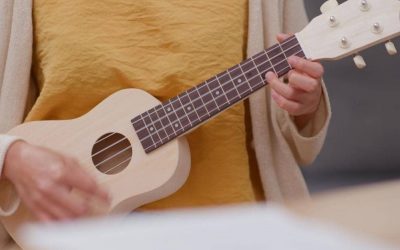If you’re just starting to play the piano, you may wonder why you need to learn music theory at all. After all, many successful musicians were entirely self-taught and all you want to do is express yourself in sound!
The truth is that savants who can produce and perform music entirely by ear are very rare. If you had that kind of skill, you probably wouldn’t need to be taking piano lessons. But here you are, so let’s learn how to practice music theory to enrich your knowledge and understanding of how music works. You’ll also gain a deeper knowledge of various genres and styles of music, which can only serve to broaden your horizons and help you understand the genesis of whatever your favorite music might be.
Read on for five ways to better understand and apply music theory when you’re learning how to play the piano.
Learn to Read Sheet Music
One of the first things that you need to do before you start applying music theory is to learn to read sheet music. This means learning the notes, the time signatures, the key signatures, and what it means when they are all put together. These symbols explain the notes and their lengths, the tempo at which a piece of music should be played, and how loudly or softly to play a piece (or part of a piece) of music.
Just as we can’t read or write a novel without first learning the alphabet, this is the first step in how to practice music theory. When you have become literate in the realm of sheet music and music notations, that’s when you can advance to more interesting and creative aspects of music and music theory. Also worth noting is that the ability to sight-read music makes you much more marketable as a musician, if you should decide to take that route in life.
It’s very likely that your piano workbook explains all this, or your piano teacher can certainly provide materials as well as assistance in this endeavor. If you are a self-taught piano student, you can find this information on the Internet or at your local library.
Learn Basic Scales
Now, we’re ready to learn some basic scales, which are pretty much the building blocks of learning music and applying music theory. Music scales are typically ordered from low to high pitch. The classic increasing C major scale is C–D–E–F–G–A–B–[C], with the brackets around the last C signifying that it is a full octave above the first one. The distance between the notes in a scale is a step, and the notes of a scale are numbered according to the steps from the first note.
Scales are classified according to the number of notes per octave, and different scales are used in different types of music.
- Two notes (ditonic), three notes (tritonic), four notes (tetratonic): these scales are generally only used in primitive music
- Five notes (pentatonic): these scales are common in Asian and other types of folk music
- Six notes (hexatonic): these scales are common in Western and other types of folk music
- Seven notes (heptatonic): this is the most common scale in modern Western music
- Eight notes (octatonic): this is used in classical and jazz music
- Nine notes (nonatonic): this is frequently used in blues music
- Twelve notes (dodecaphonic): also known as serialism, this is used in modern classical music
Learn Chords and Chord Progressions
The next step in how to practice music theory is learning chords and chord progressions, which is how the notes work together. A chord is an aggregate of musical pitches (notes) that sound simultaneously. Chords and chord sequences are mostly used in Western classical and popular music, Oceanic music, and modern West African music. Western classical music, which is what many beginner piano players start out learning, frequently uses triad chords with a root note and intervals of a third and a fifth above the root note.
A chord progression is a series of chords. In Western classical and popular music, again, chord progressions can be notated by chord charts, chord letters, Roman numerals, and the Nashville number system. One of the most commonly used chords in this music genre is the 12-bar blues progression, which can sometimes be described as the boogie-woogie bass line.
Learn Melody and Harmony
A music piece’s melody can usually be found in the top treble clef line and it is read left to right. The melody is the tune, or what makes a piece of music memorable and distinctive. When you play piano, you will typically use your right hand to play the melody.
The harmony is the bottom bass clef line and it’s usually played with the left hand on a standard piano. Harmony includes two or more notes that are played as chords and read from top to bottom. The harmony line supports the melody line and makes the music richer, with more depth and texture.
Try to Compose Music
Sometimes the best way to learn something is to just do it! As you are working to learn and practice theory, some of these concepts might feel foreign and complicated; after all, you just want to play pretty music! You’ll be able to know and love your music more when you know what went into it, though, and this will let you interact with your music in a whole new way.
Once you feel as if you understand how to read sheet music and how the elements of music work together, try writing your own short piece. It’s going to be a lot harder than you think to incorporate everything that you need to know; however, it will give you a much deeper and more thorough understanding of music and music theory.
Even just writing the notes and notations on a blank piece of sheet music will embed them in your mind so that when you sit down to play, you’ll know and understand music theory in a whole new way.




